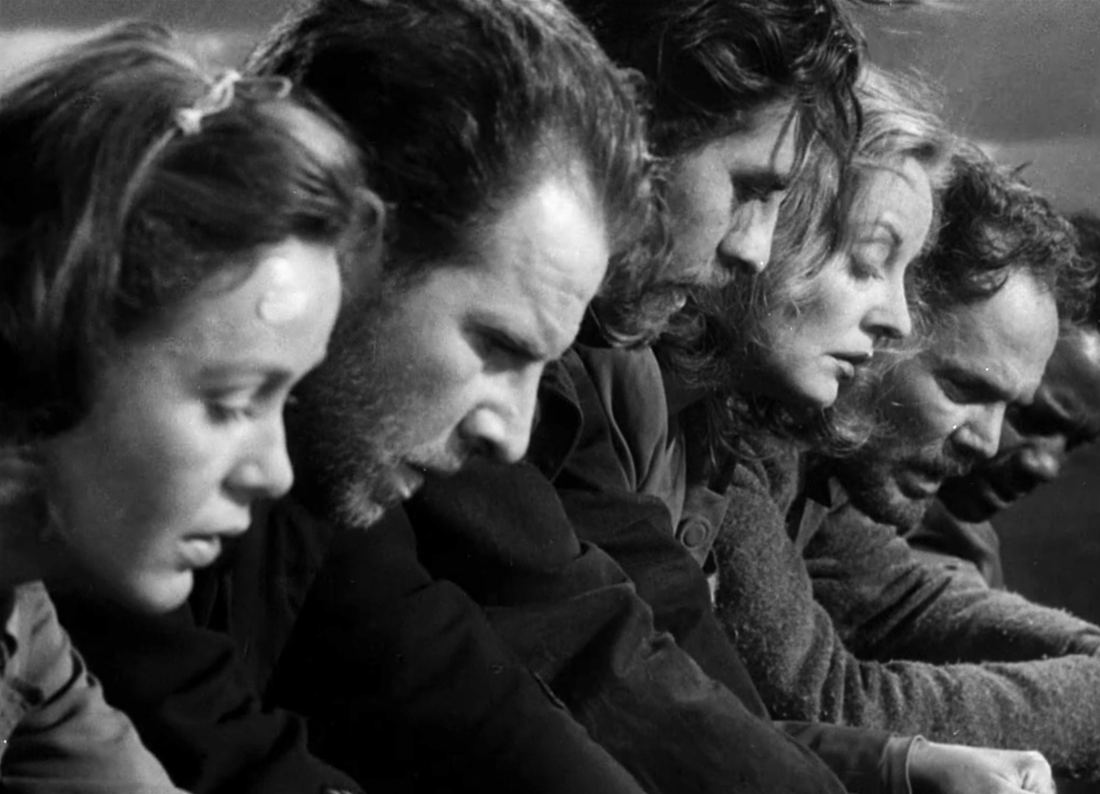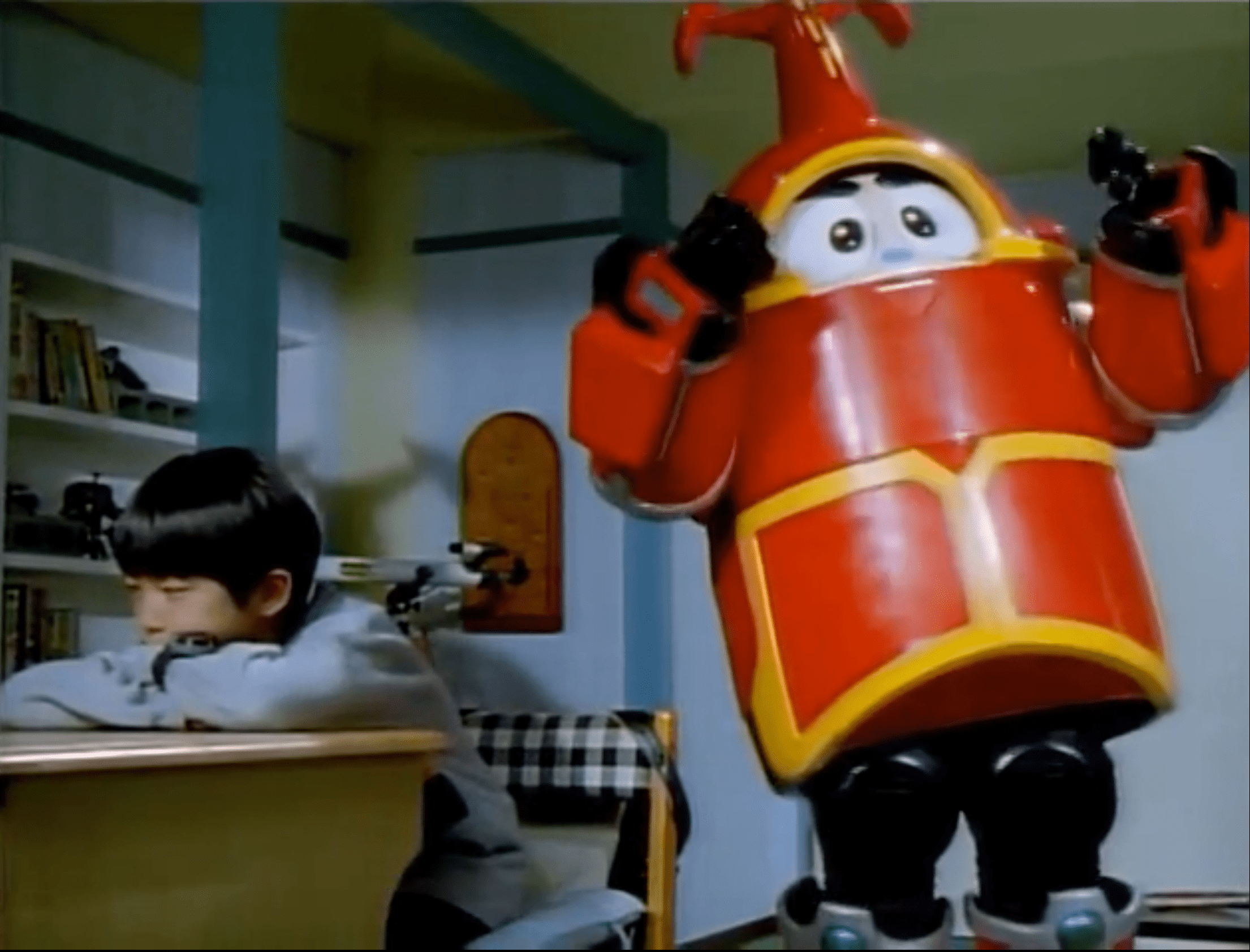
The world of cinema is most often constructed out of three shots: the wide shot, the medium shot, and the close-up. It’s a relative analog to our own visual perceptions. György Pálfi’s Hukkle (2002) uses these three elements but ads a fourth shot that goes beyond our normal viewing. Pálfi adds the super close up shot to the rhythm of his editing, weaving a world we do not normally incorporate into the mix of our awareness. We see the field, then we see the picnicker under the tree, then her face, and then an ant making its way through the grass.
Pálfi’s shots do not always follow this logical progression. Often extreme close-ups appear out of nowhere with no obvious connection to the previous shots. This inclusion of the very small into our world causes a major shift in our reality. In life, our perceptions of reality are determined by size. The world would look completely unrecognizable if we could see on a molecular level or on a cosmic level. Our reality only includes things within a narrow size range. The empty air we see around us is teeming with spores, bacteria, pollen, viruses, mites, water, chemicals, an entire universe of creatures and objects that we pass through without perceiving.

The scale in which we see can determine the meaning of what we see. In the film when the camera zooms in close to someone’s face we sharpen our observations at first and take in the details but then instead of looking at the skin, we begin to think about the subject’s interior, mental space. A close up is often not a close-up but a cue to imagine what the character is thinking or feeling.
Close-ups can also function in the same way specific details function literature. They ask us to observe more closely and take note of something we might not have considered. In police work, details are thought to be a sign of veracity. Police ask a suspect to describe a story over and over again until a detail changes and their lie unravels.
As a result, when we see small details rendered on-screen we absorb it as fleshing out the reality we are receiving. In Jane Campion’s The Piano, she takes a moment right in the middle of a dramatic assault to show a few spools of thread that are disturbed when Alisdare slams Ada against a table. The event is terrifying and dramatic but Campion takes a moment to include a detail that magnifies the experience both literally and figuratively. It's as if someone were recounting the story and wondering quizzically about a detail that was inexplicably lodged in their brain.

The film Hukkle is completely visual, it contains no dialogue. There are ambient sounds but words are not spoken. The choice to keep the characters silent pushes the audience away from being completely involved in the narrative. It makes clear that we are observers, not participants. Just as the extreme close-ups draw us the lack of dialogue pushes us out.

From our observational position, we are given glimpses of events that might fit together into some kind of narrative. There is a dead man at the bottom of the lake. There’s a woman hiding in a cave. There is something strange going on. People have described Hukkle as “sinister” but it’s too whimsical to truly be unsettling. The film doesn’t need to add up to a logical whole. It is captivating just as a series of observations. The observations are as much a source of humor as they are of dread. The humor is how seemingly random events begin to connect. At first, the film feels a little like Koyaanisqatsi or Baraka in that the camera just passes through the world witnessing its curiosities but then a rhythm sets in, and some scenes begin to act like punchlines for previous scenes. The camera keeps coming back to an old man with a case of the hiccups sitting in front of his house. The movie is named after the sound his hiccups make. Each time we see him he sits with a beatific smile and watches the world go by. There is the grunting male pig with very prominent testicles strutting his stuff down the street. There is the low flying plane that roars through, and the car chase with the police, he witnesses it all just as we do.
Hukkle is essentially about description which is often at the heart of the artistic endeavor. You can describe something with paint or words or dance or film. Hukkle is a series of descriptions provided by an observant artist. The camera may position us as an observer but not an aloof one. We are given details that draw us closer, but we are not given connections that push us back out again. There is a curious oscillation between open and closed that creates a sense of mystery.
Hukkle is the sort of movie that invites repeated watching. It asks for our participation in its constructions and each time you watch it, it changes. It can add up to absurdity or mystery or comedy depending on how you link its elements.

If you enjoyed this article click here for more
www.filmofileshideout.com/archives/the-nature-of-narrative



